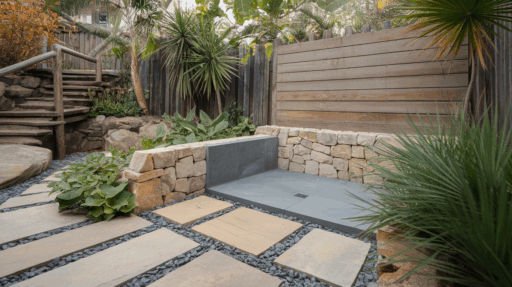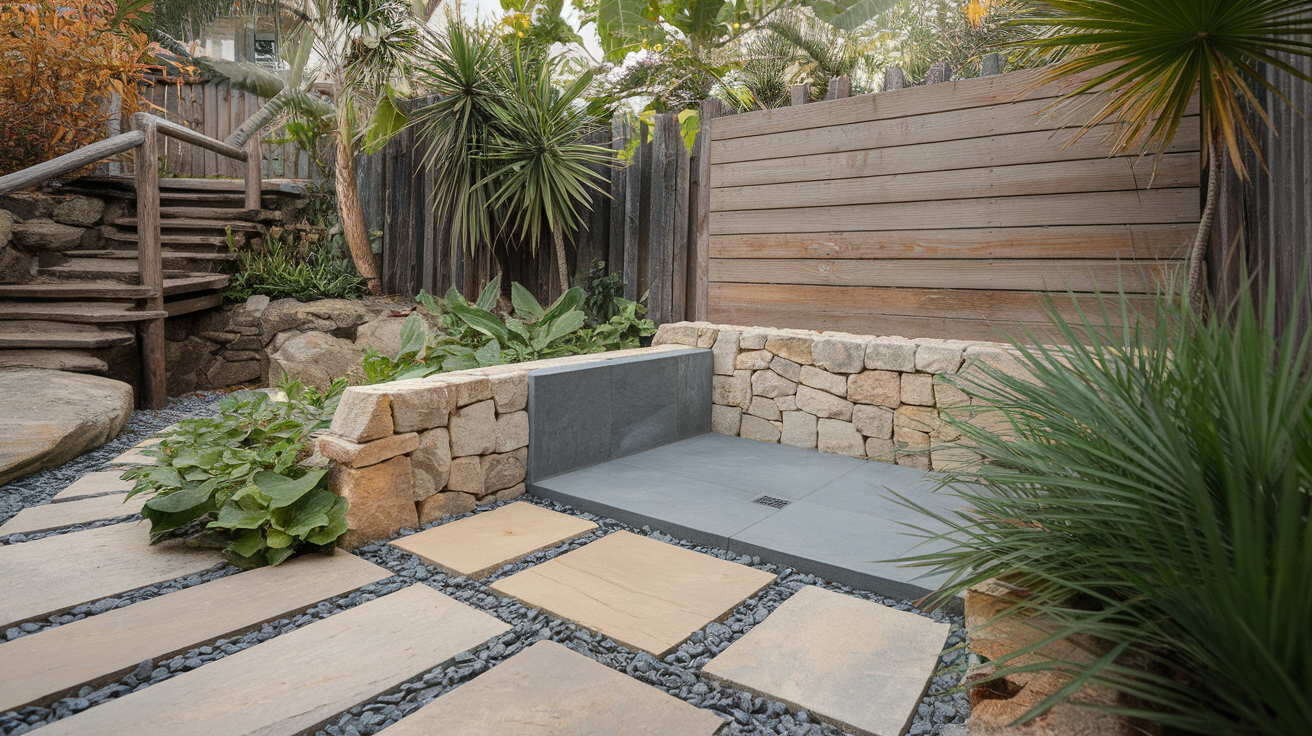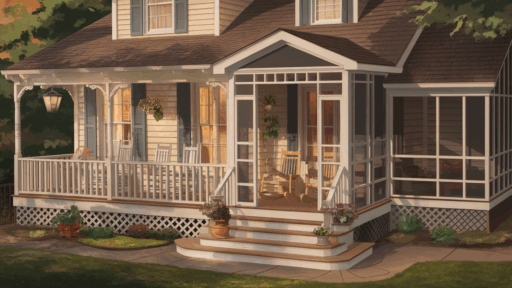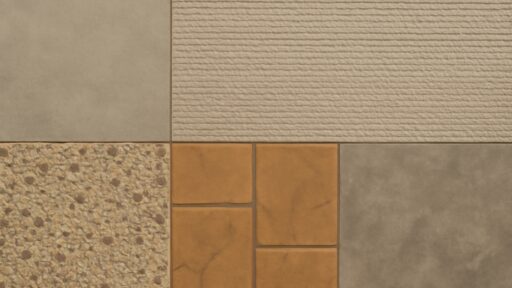When I built an outdoor shower in my backyard, I was focused on the look and the water pressure, not where the water was going.
That mistake became obvious after a few uses when muddy puddles started forming underfoot. It wasn’t just messy, it was frustrating.
That’s when I realized drainage isn’t optional. It’s what makes the entire setup usable and enjoyable in the long term. Whether it’s gravel pits, trench drains, or greywater systems, there are plenty of solutions—but they don’t all work for every space.
In this blog, I’ll walk you through the drainage options I researched, the one I chose, and the mistakes I’d avoid next time.
If you’re planning your own outdoor shower, read this first. You’ll thank yourself later and your feet will stay dry. Feel free to ask me questions anytime!
Why Outdoor Shower Drainage Matters
Outdoor showers may seem simple, but without the right drainage, they can lead to a host of frustrating (and expensive) problems.
Water runoff from a shower doesn’t just disappear; it has to go somewhere.
If there’s no plan in place, it typically pools around the base, saturating soil, damaging nearby plants, and creating slippery or muddy conditions.
Over time, this excess moisture can seep into foundations, attract pests like mosquitoes, and accelerate the decay of wood, decking, or even concrete surfaces.
Drainage also plays a crucial role in maintaining hygiene and ensuring water safety.
If your shower includes soap, shampoo, or other products, that runoff could harm your lawn or flow into storm drains, affecting local water quality.
Effective Drainage Systems for Outdoor Showers
Each outdoor shower setup requires a drainage system that fits the space, soil, and usage. From simple gravel pits to eco-friendly greywater systems, the right choice helps manage runoff, reduce mess, and protect surrounding areas.
1. Gravel Drain Pit
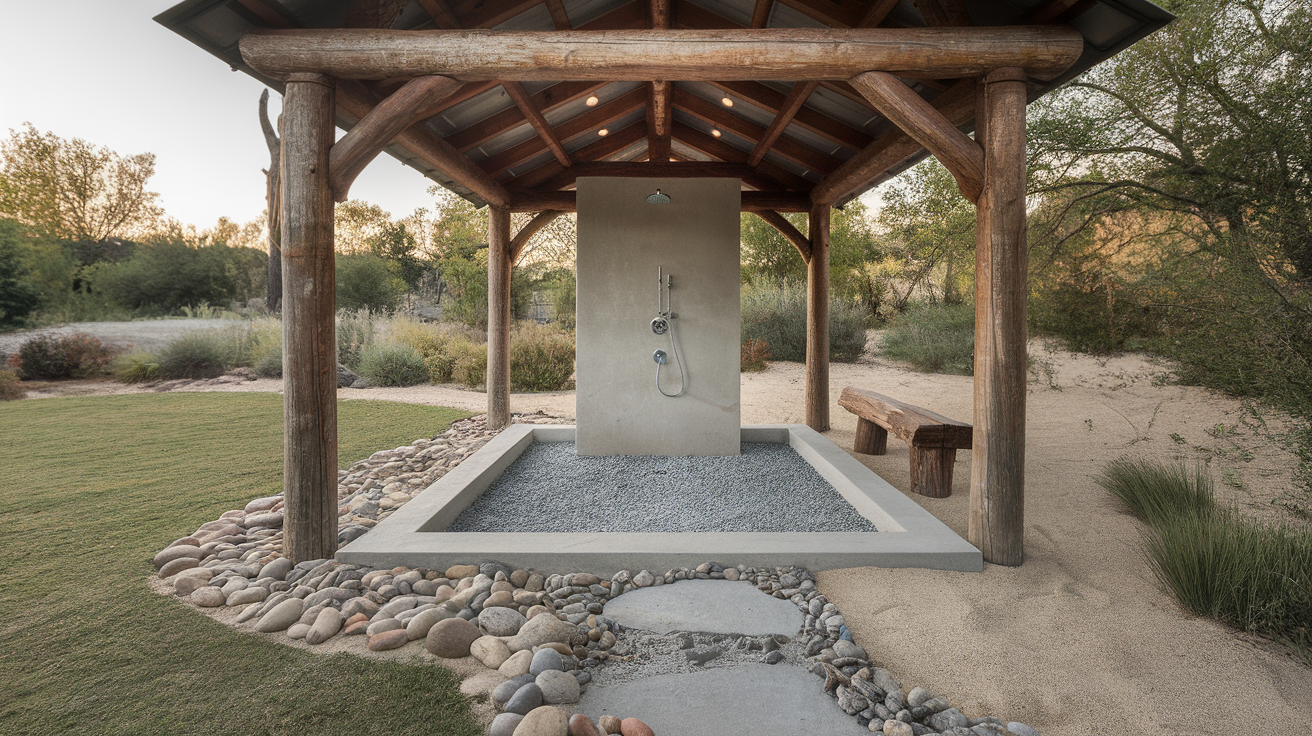
A gravel drain pit is a simple system in which water drains through loose gravel into a shallow pit located beneath the shower. It’s cost-effective and easy to install, especially in areas with sandy or well-draining soil.
However, without proper layers, such as geotextile fabric, the pit can clog with dirt over time. This method is best suited for seasonal or low-use outdoor showers with no concerns about soap or greywater.
2. French Drain
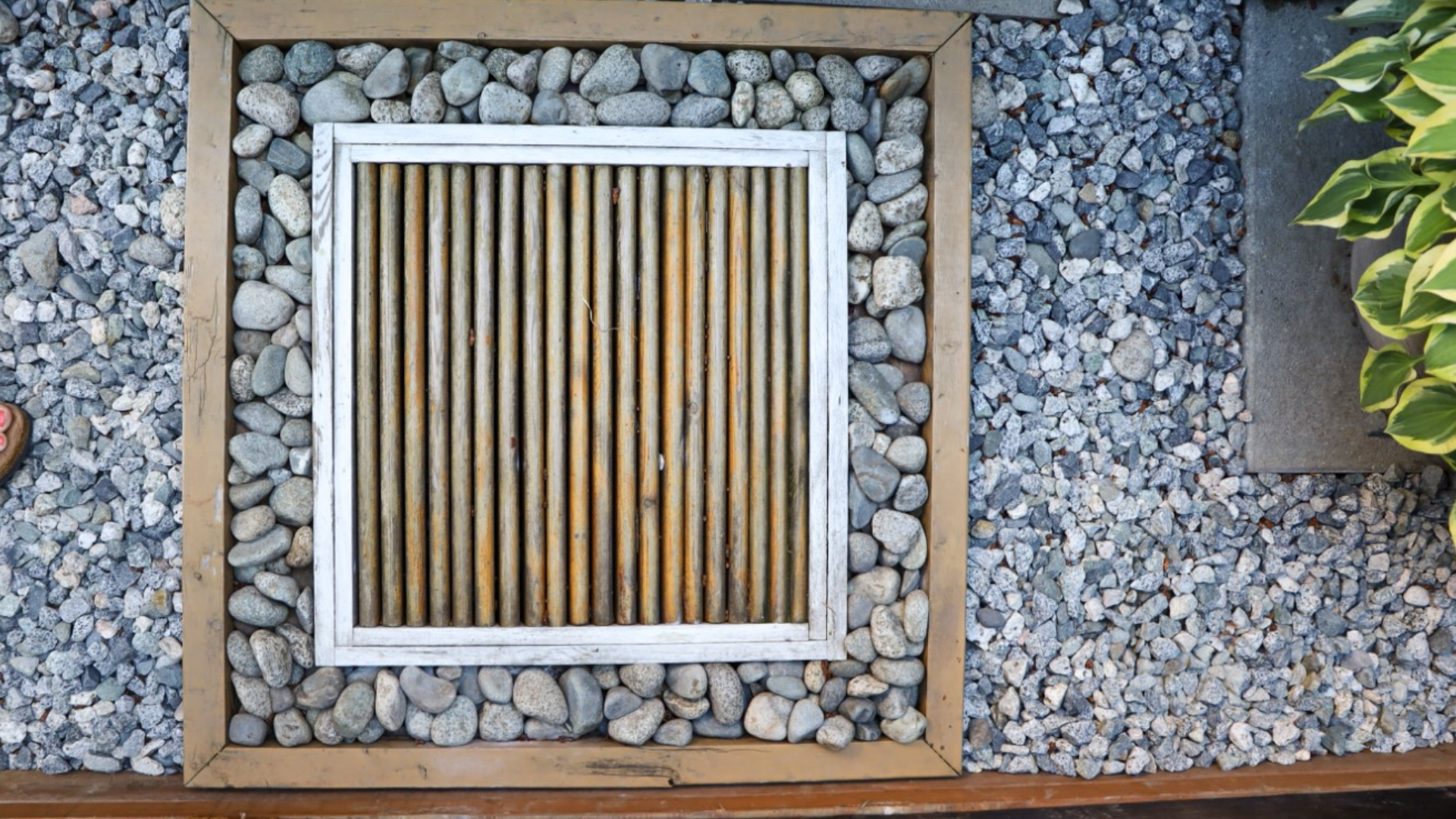
A French drain consists of a perforated pipe laid in a gravel-filled trench, wrapped in filter fabric to prevent clogging. It collects and redirects water away from the shower area, usually toward a garden or soakaway point.
This system is ideal for medium- to heavy-use showers and poorly draining soils, such as clay. It prevents water buildup and is effective in sloped yards where natural flow direction helps move runoff efficiently.
3. Dry Well
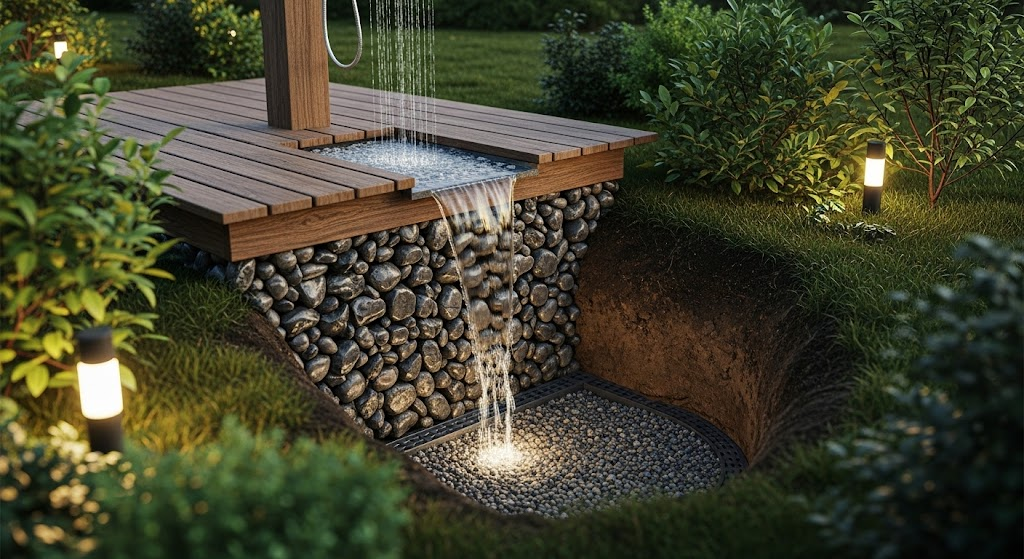
A dry well is a deep hole filled with gravel or stone that collects and slowly disperses water into the surrounding soil. It’s buried underground and often connected to a pipe system for better distribution.
Dry wells are excellent for handling large volumes of shower runoff and are especially useful in sandy or loamy soil conditions. They require minimal surface space and help reduce surface pooling or erosion.
4. Trench Drain with Grate
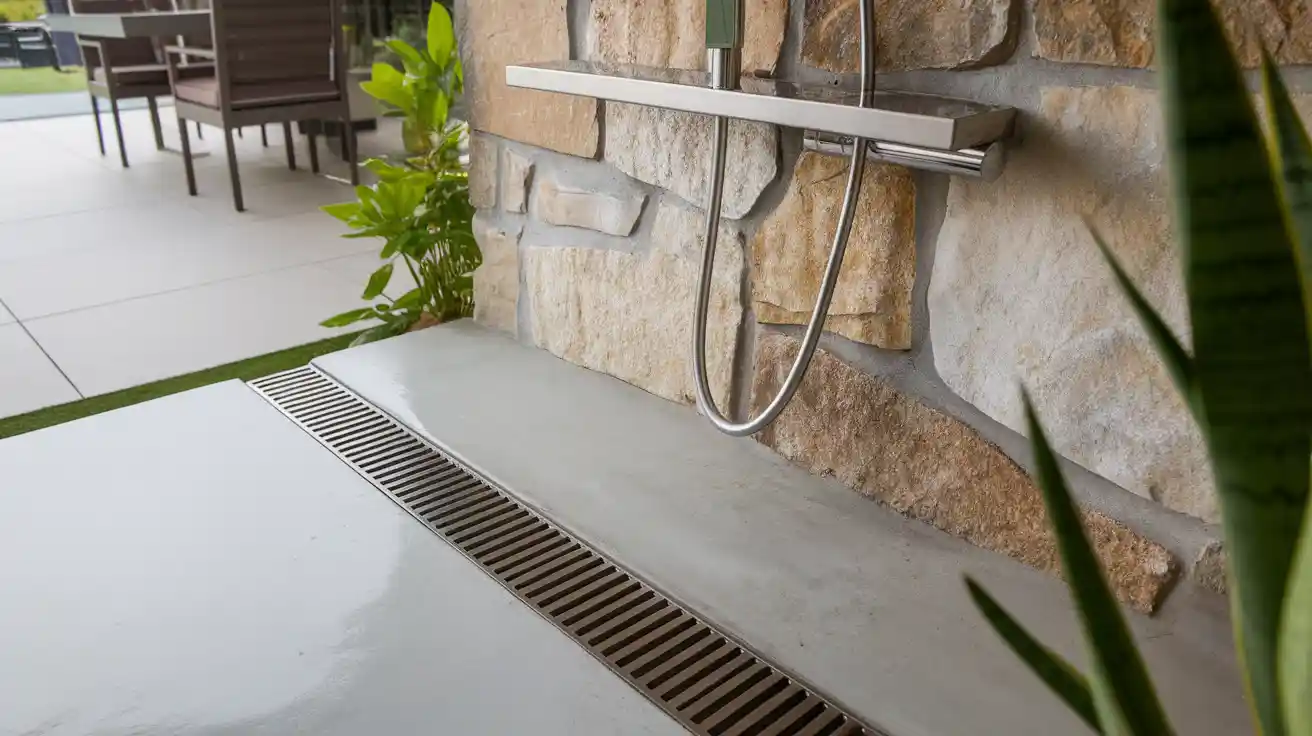
A trench drain is a long, narrow channel installed beneath the shower area, usually covered by a metal or plastic grate. It collects water over a wide area and directs it to a drainage outlet or pipe.
Ideal for tiled or concrete bases, this system is suited for heavy-use showers and modern designs. It provides fast, visible drainage and helps keep surrounding surfaces clean and dry.
5. Linear Drain
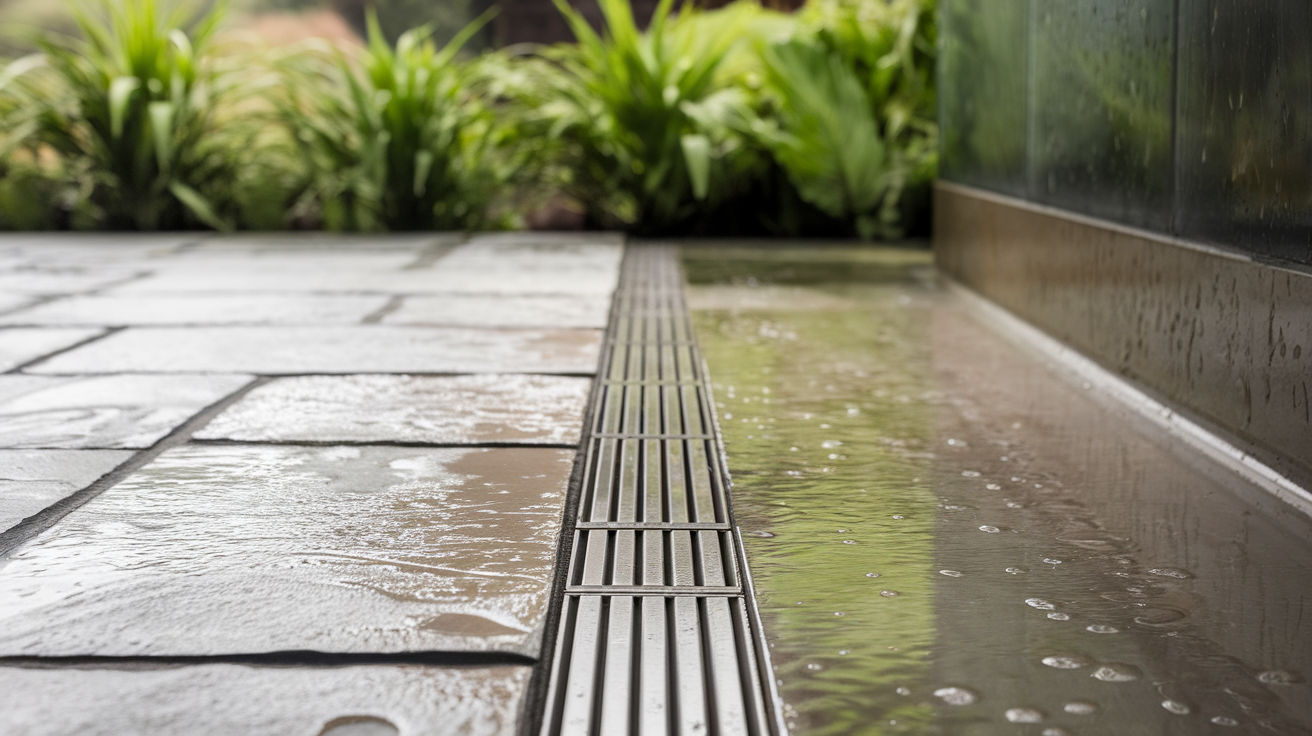
A linear drain is a sleek, modern drainage channel placed along one edge of the shower base. Unlike traditional center drains, it requires a single slope and provides even, fast water removal.
Linear drains are popular in stylish outdoor showers, particularly on decks or patios with limited slope.
They work well with stone, tile, or composite surfaces and integrate seamlessly with minimalist or contemporary outdoor spaces.
6. Greywater Collection System
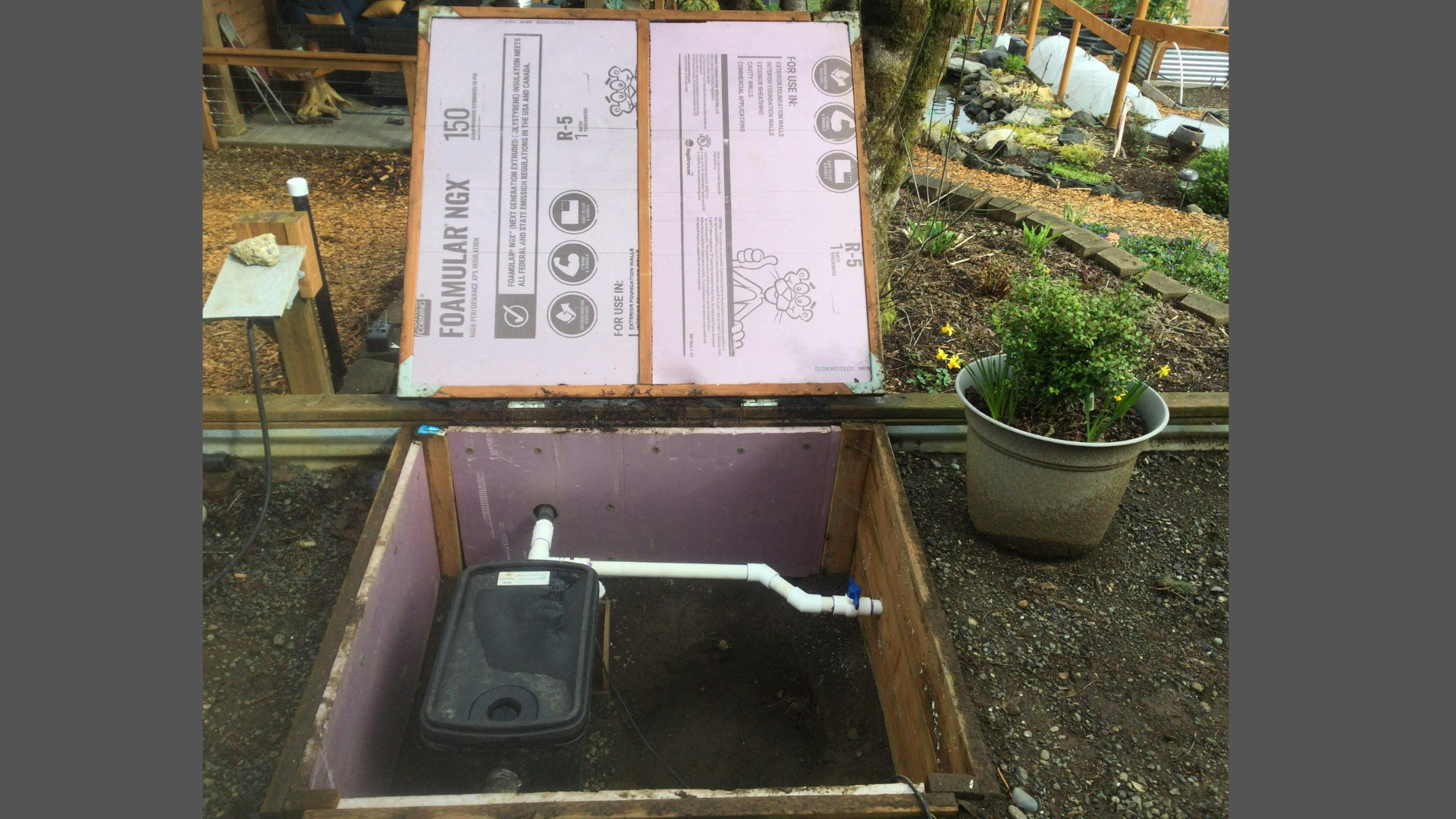
Greywater systems collect used shower water for reuse in irrigation or landscaping. They involve a diverter, filter, and holding tank to capture and treat runoff before it is redistributed.
This eco-friendly option helps reduce water waste and promotes sustainable outdoor living. Ideal for regular-use showers, greywater systems are a smart, long-term solution for environmentally conscious homeowners.
Factors to Consider Before Planning Outdoor Shower Drainage
Before choosing a drainage system, it’s essential to consider the broader context. Soil type, slope, shower usage, and even nearby structures all play a role in determining how well water drains.
- Soil Type: Sandy soil drains quickly, while clay holds water. Soil type affects which drainage method will be most effective and whether you need additional filtration layers.
- Shower Base Material: Concrete, decking, gravel, and natural stone each drain differently. The surface material determines slope needs and how easily water flows away.
- Frequency of Use: A shower used daily requires a more robust drainage system than one used occasionally. High traffic demands faster water removal and deeper drainage beds.
- Yard Slope and Layout: Naturally sloped land helps water move away from the shower area. Flat yards may need a built-in slope or a directional trench system.
- Nearby Structures: Avoid routing water toward foundations, patios, or footpaths to prevent long-term damage or mold issues.
- Climate and Rainfall: In areas with heavy rain, drainage systems must handle both stormwater runoff and stormwater overflow without backing up.
- Greywater Regulations: If you plan to reuse shower water for irrigation, check local greywater laws and install the proper diverters or filtration systems.
Local Code and Environmental Considerations
Before installing an outdoor shower drainage system, it’s essential to check local building codes and environmental regulations.
Many municipalities have regulations regarding the discharge of greywater, particularly when soap, shampoo, or other cleaning products are involved.
Some areas may require permits, inspections, or specific filtration setups for drainage systems.
Improper drainage can lead to runoff entering storm drains or contaminating groundwater, potentially violating local health and environmental laws.
In coastal regions or areas with sensitive ecosystems, restrictions are often even tighter to protect soil and water quality.
Always consult with your local building department before starting construction.
The following code not only avoids fines and rework but also ensures your setup is safe, eco-friendly, and legal from day one.
Drainage Mistakes to Avoid
Improper drainage can quickly turn an outdoor shower from a luxury into a maintenance headache.
- Assuming the ground will absorb everything: Relying on soil absorption alone often leads to pooling and erosion, especially in clay or compacted ground.
- Using an undersized gravel pit: Small or shallow gravel pits can clog easily and fail to keep up with water flow during frequent use.
- Skipping a proper slope: A flat surface causes water to stagnate. Without slope, water won’t naturally move toward the drainage area.
- Not installing filtration layers: Leaving out landscape fabric or sand layers can result in sediment buildup, which clogs the drainage over time.
- Ignoring runoff direction: Poorly planned runoff can direct water toward your home, patio, or walkways, causing damage or a mess.
Conclusion
After going through the trial-and-error phase, drainage matters as much as choosing the showerhead or finish.
The right system depends on your soil type, how often you use the shower, and what kind of base you’re working with: wood, concrete, gravel, or stone.
Even the slightest misstep in drainage can turn a relaxing rinse into a muddy mess.
If you’re still unsure which setup makes the most sense for your space, don’t stress. You’re not alone. I’ve been there.
Feel free to drop a comment, ask a question, or reach out directly.
I’m happy to help you figure out the best drainage solution so your outdoor shower stays clean, dry, and low-maintenance all season long.
Let’s get it right the first time.

